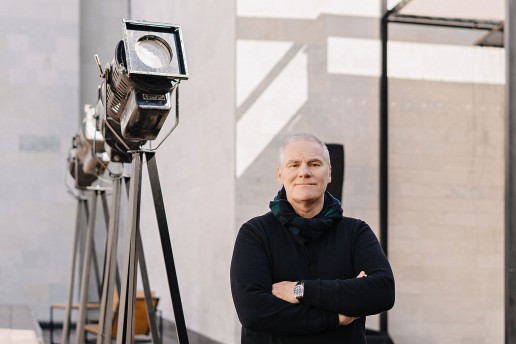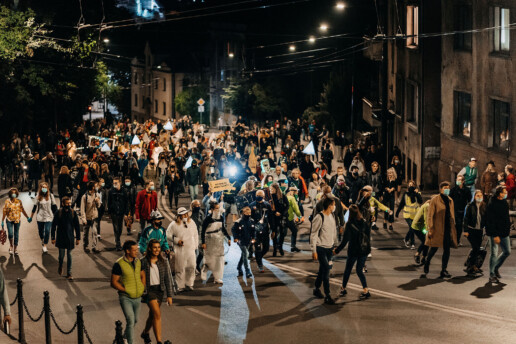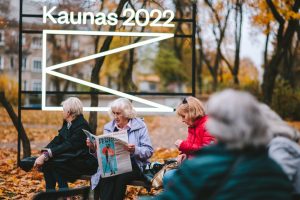Chris Baldwin: Breaking down a boundary and stereotype means to actively help in the process of making new meanings, more useful cultural works
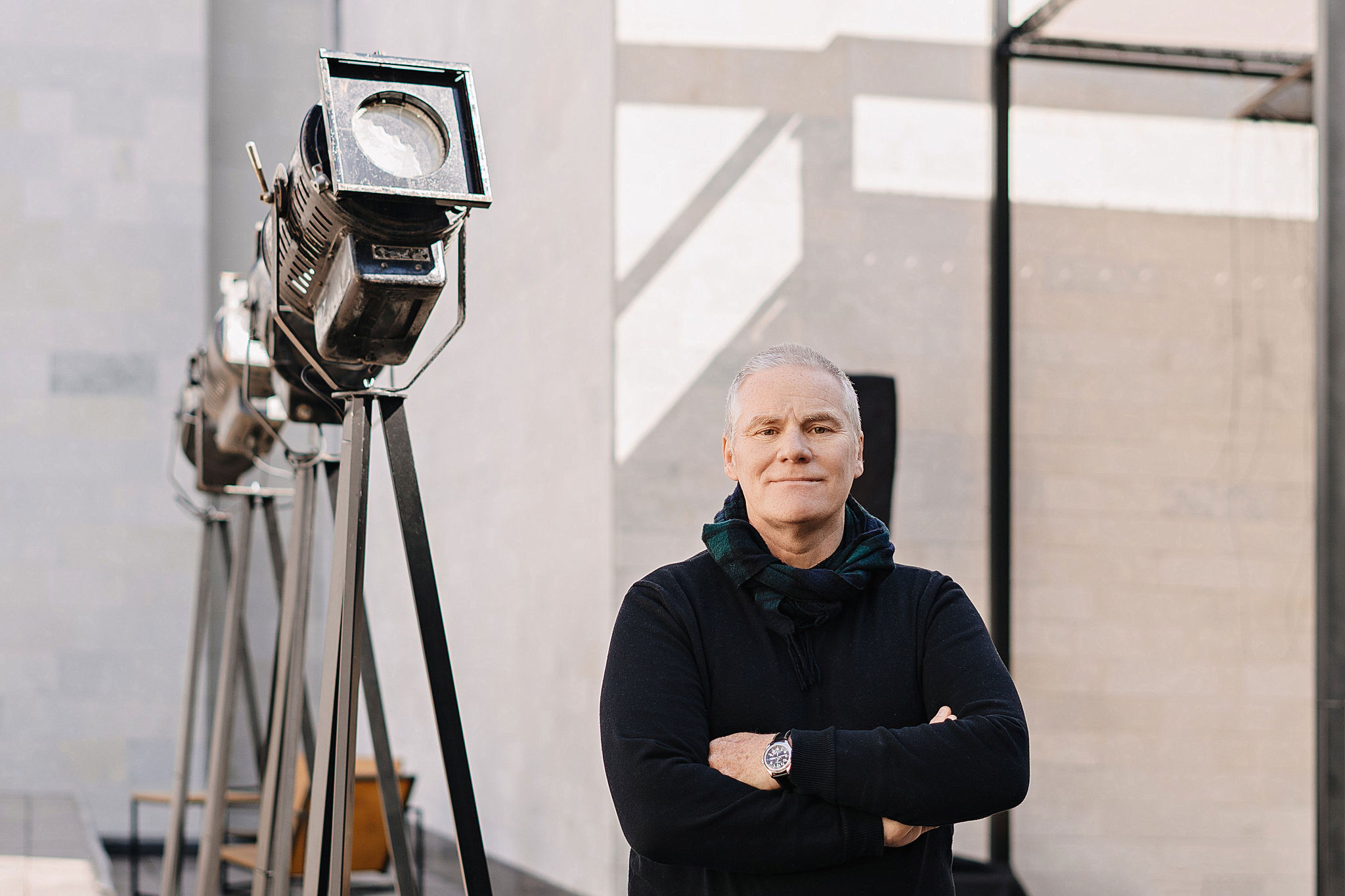 Chris Baldwin is a director, writer, curator… But he is so much more than these definitions. For many years now he has worked across the continent and has added to the success of a handful of European Capitals of Culture. This experience, together with his natural openness to the world and its cultures, make Chris a true European. No wonder the artist was invited to co-create the unique symphony “Šaipėrantas” (composed by Antanas Jasenka, conducted by Modestas Pitrėnas) for the grand opening of Kaunas 2022 on January 22 at 7:30 pm. The director got to know Kaunas intimately during this process – he also agreed to tell us more about his understanding of Europe and Europeanness.
Chris Baldwin is a director, writer, curator… But he is so much more than these definitions. For many years now he has worked across the continent and has added to the success of a handful of European Capitals of Culture. This experience, together with his natural openness to the world and its cultures, make Chris a true European. No wonder the artist was invited to co-create the unique symphony “Šaipėrantas” (composed by Antanas Jasenka, conducted by Modestas Pitrėnas) for the grand opening of Kaunas 2022 on January 22 at 7:30 pm. The director got to know Kaunas intimately during this process – he also agreed to tell us more about his understanding of Europe and Europeanness.
Below is an interview with director Chris Baldwin.
- Being British, how did you start working in countries that are considered post-soviet or post-authoritarian? Was it an adventurous decision?
- Ahh. Being British! I don’t really know what that means. I was born in Oxford in the early 1960’s. I was the younger one of post-war siblings. So we grew up with quite a strong sense of what being British was supposed to mean. We had, after all, with the Americans helping out, won the war against Germany. So being British was about fairness, democracy and standing up against the bullies. It was only as I grew up, and had some great teachers, and watched some fantastic BBC, that I began to realise that all this was a rather comforting myth, and that reality and history was rather more complicated. The problem with believing such myths is that it leaves you open, it leaves people open, to being vulnerable to the next myth which comes along. In these times of Brexit, the Britain I knew has been re-configured beyond recognition to me at least.
And then you also use the words ‘post-authoritarian’. A ‘post-authoritarian’ country is an interesting term - and I have used it in my own writing. It suggests that authoritarianism is something that has been left in the past. But recent events in various countries suggest that this is a phrase we need to re-think. I started working in post-soviet and eastern ‘post-authoritarian’ European countries in early 1990. The Berlin Wall had just fallen, and I was teaching and performing at the University of Ingolstadt (then part of West Germany). The British Council invited me to travel around the then East Germany and contact some of their state theatres. I did. I met lots of fantastic people and ended up working there for a couple of decades. From the mid 1980’s I worked a lot in Spanish theatres but also with secondary and primary teachers of various subjects including History. I was interested in how schools could make their work with children more creative, less authoritarian! I discovered that classrooms and curricula had a lot in common with rehearsal rooms and scripts. And both often reflected the political and power mechanisms at play in the wider society. For example, in the 1960’s and 70’s if a child spoke Basque in a Spanish school they could, and did, get a beating from a teacher. But the same was happening in the wider society too. Where countries had recent experience or memory of authoritarian political leadership or culture one could expect to find similar authoritarian attitudes to problem solving, decision making, discipline in schools, hospitals, theatres, kindergardens, in curricula and in theatre texts!
I directed a play by Charlotte Keatley called, ‘My Mother Said I Never Should’ in Warsaw in 1995. And my theory seemed confirmed. There was a real expectation that the director would be a mini-dictator (actually, not that mini!). But that same expectation, from managers and actors alike, was not dissimilar in Spain or eastern Germany. I found that fascinating and terrifying! Someone once said to me, “Franco will not be dead until the last teacher trained under Francoism has retired from the classroom”. And I thought, “well, that could be the year 2010!” That might be unfair as many teachers in Spain were deeply resistant to Franco’s ideology. But it does raise important questions about historical legacy and how values are transmitted through education and culture through generations.
Since the late 1980’s I have lived and worked in a number of European countries. Spain, Poland, Germany, Ireland and Bulgaria, where I now live. I am European. For me Europe has made my life, and the life of my children, immensely richer. Not because we are wealthier because of the EU but because of the freedom of travel, work and study that has been a direct legacy of 1989. That freedom has been given up by the UK as a direct result of Brexit. I don’t understand how British children, no longer being able to work or study freely in 27 countries, are somehow ‘taking back freedom’. It seems someone has swallowed quite a terrifying and dangerous myth. But it is a potent one. Historical myths can lead us to surrender our own freedoms!
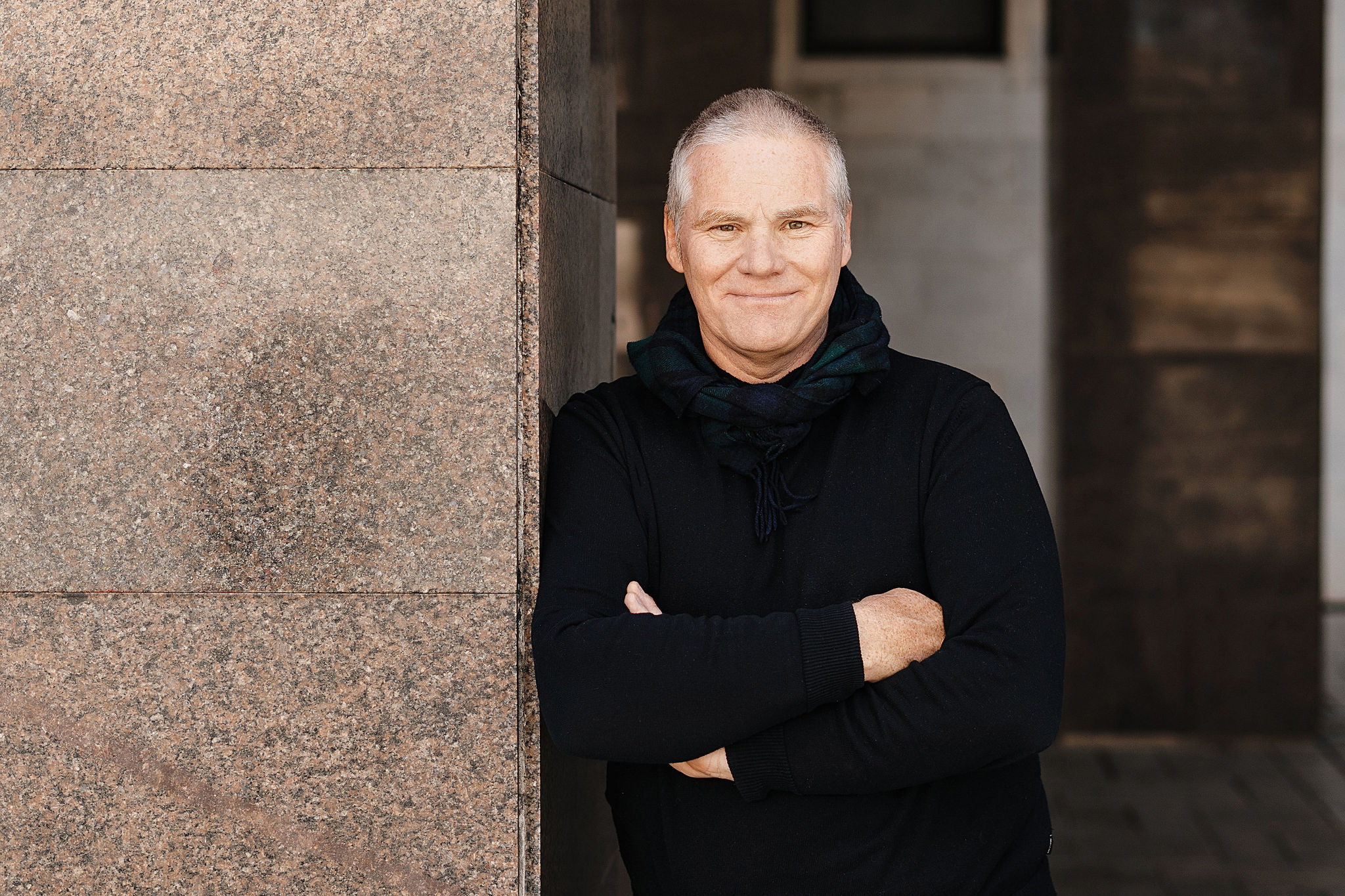 - What are the main (artistic – and not only) challenges while directing events as extensive as opening ceremonies for Olympic games or ECoC? Does the size (budget, too) of creations and ideas liberate you or, on the contrary, put you under an obligation?
- What are the main (artistic – and not only) challenges while directing events as extensive as opening ceremonies for Olympic games or ECoC? Does the size (budget, too) of creations and ideas liberate you or, on the contrary, put you under an obligation?
- Finding the story! Creating a useful and fascinating and helpful myth! Yes! Not all myths are unhelpful. It’s a huge task, a responsibility to be taken seriously, to find the story which interests a wide public, but at the same time does not reinforce stereotypes but creates freedom for us to think and feel about what ‘being together’ means. And that is what drew me to Kaunas in the first place. The team were clear and energised about their aims for Kaunas 2022 – and the fact that a special myth, the Myth of the Kaunas Beast, was to inform our work. Once a story, and a reason for that story, was clear then the big production and artistic decisions, budgetary implications, are so much easier.
We have lived through and continue to be impacted by Covid19. That remains a huge challenge for directing and preparing big events. Involving multiple voices in the building of a story takes lots of rehearsals, lots of listening and conversations. Rehearsals are also predicated on many people and teams coming together to work out solutions and creative proposals. And the events themselves should be carnival-like, for people to have a great time in large groups, sharing liminal moments together. Covid19 has made all three of these things, building story, rehearsals and event design, totally different for the last two years. But not necessarily for the worse! We have had a fantastic year building shows and events. Preparations have depended, more than usual, on technology and the internet. But maybe we have travelled less. Good for our skies! And when we are together it feels so special, so important. It is no surprise to any of us that during the pandemic people turned to culture across the world. Streaming services online and book sales have exploded! We, humans, are all story-telling creatures. That cannot be removed by a pandemic. Rather it is made more necessary. The question remains: Who gets to tell the stories? Are they going to help us understand the nature of the challenges we face? Or do the stories we encounter lead us towards new authoritarian myths and tales which prepare us for a new authoritarian future?
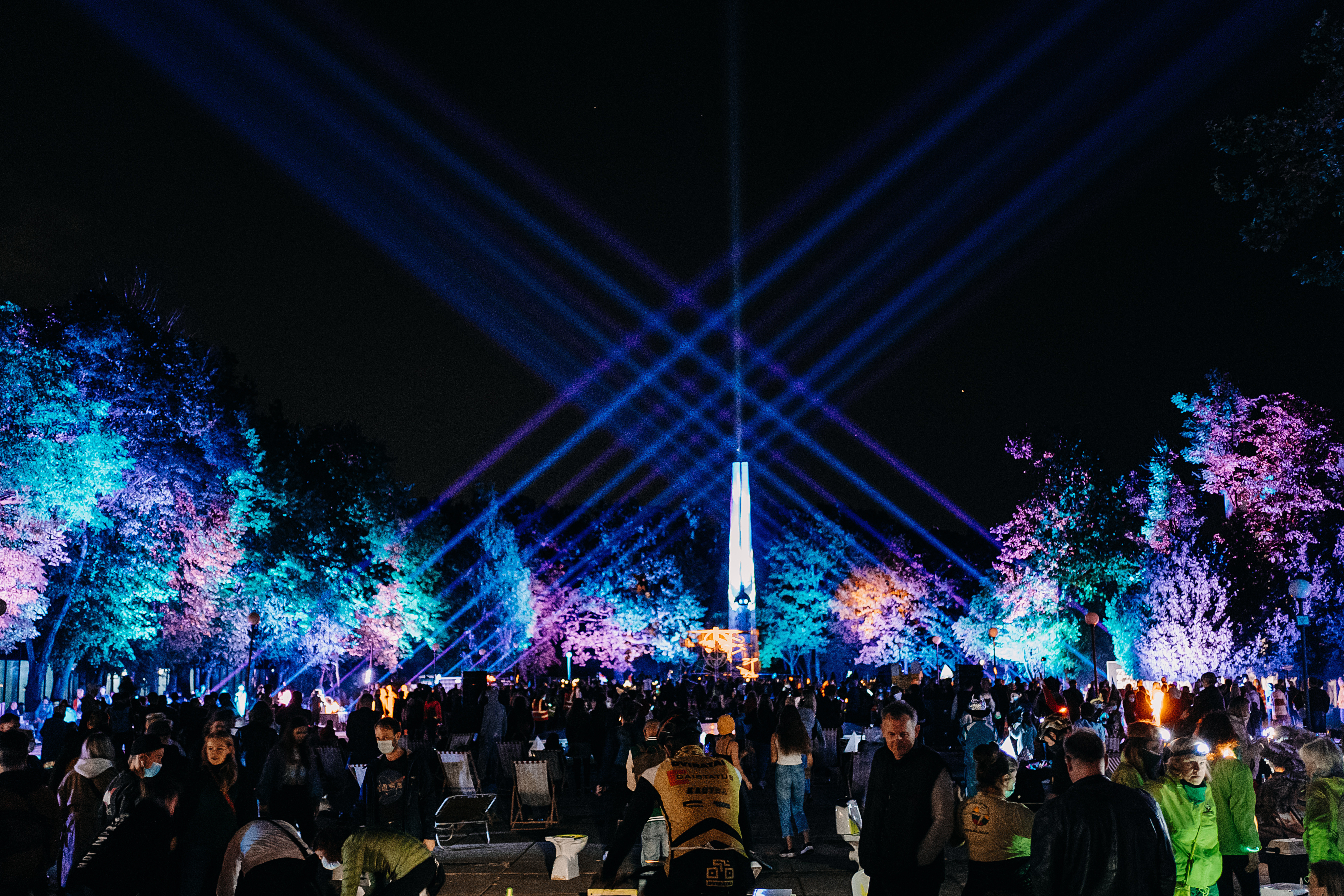 - Could you briefly compare the core ideas – or as you see them – of ECoC Wroclaw, Galway and Kaunas? Can you spot a singular vector for the project of ECoC in general, which is almost 40 years old already? I mean, do European Capitals of Culture have the same role they did in the 1980s or 1990s?
- Could you briefly compare the core ideas – or as you see them – of ECoC Wroclaw, Galway and Kaunas? Can you spot a singular vector for the project of ECoC in general, which is almost 40 years old already? I mean, do European Capitals of Culture have the same role they did in the 1980s or 1990s?
- A place, a city, Kaunas, Galway, Wroclaw are rooted, fixed and identifiable by their geographical locations. The river Corrib is among the shorted river in Europe, and as a result, one of the fastest flowing and most dangerous. The landscapes of western Ireland, Connemara, are harsh and unforgiving yet the purples in the sky and soil leave you staring in disbelief. There is also the legacy of colonialism everywhere. Have these two things impacted Galway’s sense of identity? Intensely. Yet Galway has radically changed demographically in recent decades. And Galway’s ECoC was about the way the past informs the now but also how globalised trade and communications are impacting every aspect of contemporary life. Seas, weather, languages, religions, architecture, design of urban spaces, invasions, colonial legacies all differ from country to country, city to city – yet they are all to be contended with as they are what we all share as Europeans. Wroclaw is also defined by a river, the Odra. It is also defined by legacies of war, language and population removals and arrivals. And Kaunas is defined geographically perhaps by the two great rivers, Nemunas and Neris, with their confluence creating such a magical and defining space. Is Kaunas built in this spot out of coincidence or because of this confluence? That, for me, is what European identity is about – the way we manage the legacy of multiple languages, borders, competing historical myths. As Timothy Snyder, the US historian said last year, “Europe, you are greater than your myths!”. What fascinates me about contemporary ECoC’s, those of the last 10 to 15 years, is that they seem to conclude that diversity in audiences, in communities and artists, multi-linguicism have been, and will remain, ever-present features of European life. Lithuania, Ireland, Poland, Slovenia, Bulgaria, Spain; all EU nations struggling with 20th Century legacies, looking to develop coexistence that helps us manage and thrive in a world where non-border issues now dominate all our lives. We might be from different countries but neither Covid19 nor the climate emergency respects borders, different religions, or languages.
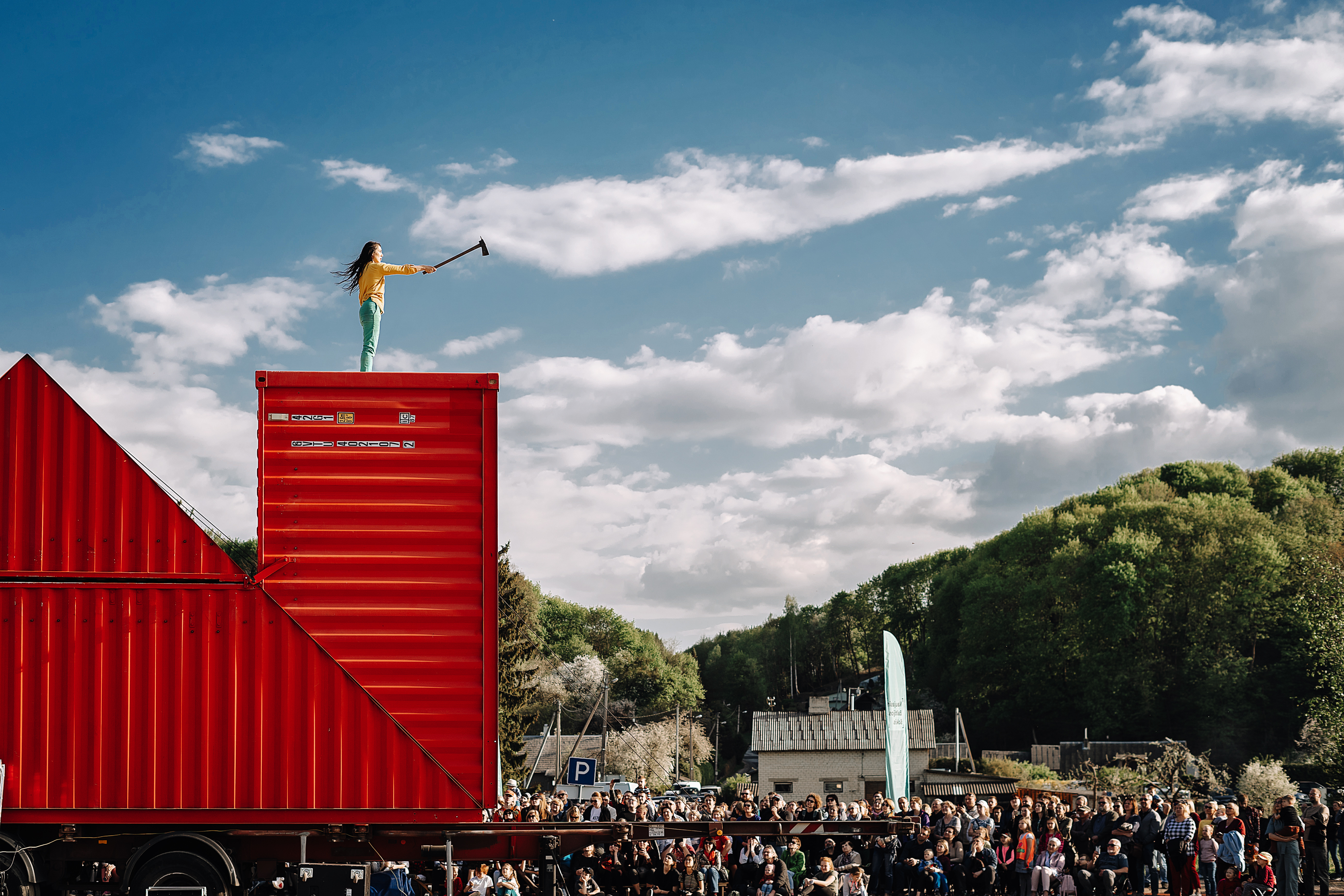 - Are you, as a professional, learning something new while working with Lithuanian artists and communities for the Kaunas 2022 project?
- Are you, as a professional, learning something new while working with Lithuanian artists and communities for the Kaunas 2022 project?
- Kaunas is a keen and great teacher. And I am learning about human struggle, hope and joy from this perspective. On one of my trips to Kaunas, I was picked up by a young taxi driver who, in perfect English, told me about his years in Cork in Ireland. He went on to tell me the story of his family during the late Soviet period and how members of his family had been forced to fight in Afghanistan. He was a very bright and thoughtful young man who had a thousand stories that defined his European-ness. And then there are the extraordinary artists of all generations who are as comfortable working across borders and languages online as they are in referencing early 20th-century Lithuanian poets, painters, and architects. I have learnt about Lithuanian cultural trends, their interconnectedness with history and politics, neighbours, and neighbourhoods. And every day Lithuania and its artists teach me more.
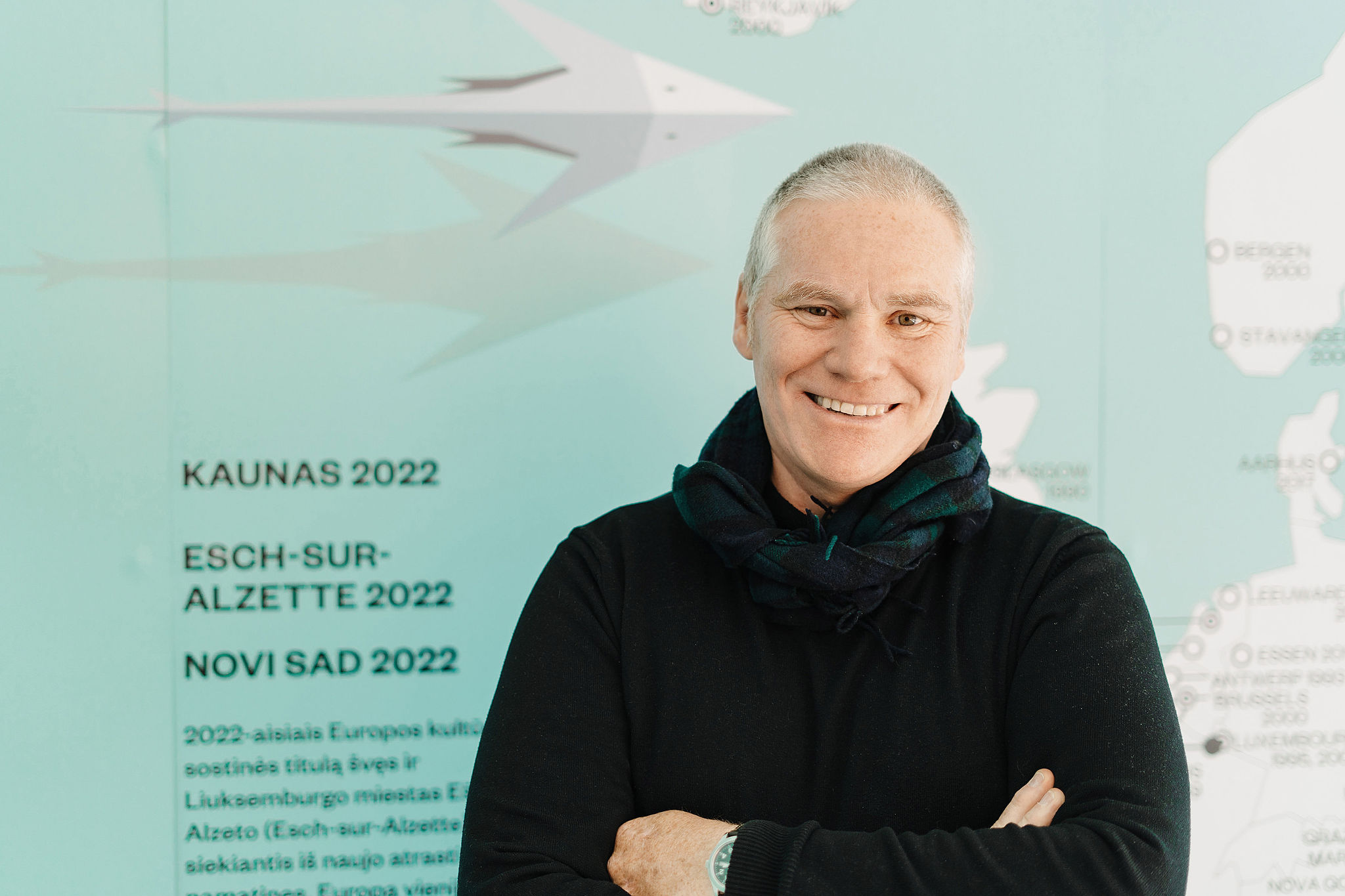 - Would you agree that Kaunas has outgrown itself, its boundaries and stereotypes, during the preparation for 2022? What changes have you noticed while working with the city?
- Would you agree that Kaunas has outgrown itself, its boundaries and stereotypes, during the preparation for 2022? What changes have you noticed while working with the city?
- At the beginning of this conversation, I mentioned that my experience of Spain and Poland led me to see that authoritarianism is not something we accelerate away from but that we need to defend ourselves from – it’s a continual task in which culture, education, civic society and institutions all have a role to play. Kaunas 2022 has made an exceptional contribution to that in my opinion. And it is a key feature about ECoC’s in general, by the way. They are processes, not simply festival events. But just as festival events are defined not just by the acts on stage but by the audience who takes part, an ECoC is as much defined by the way local people, citizens and the wider community interacts with it and accept the invitation it makes to us all! Come and join in! Co-create with us! Make this your ECoC! That is what breaking down a boundary and stereotype means – to actively help in the process of making new meanings, more useful cultural works, which help us understand this world of ours. Kaunas has changed. It’s more fluid, more open, more interconnected within the city and through its understanding of its past. Kaunas is contemporary! It’s a European city with deeply European stories to share. And all this, with more work still to be done, will become the legacy of Kaunas 2022. Legacy is so important as will make sense of the investments, imaginative and financial, that have been made so far. Have you seen how Liverpool 2008 are still talking about their ECoC 22 years later?
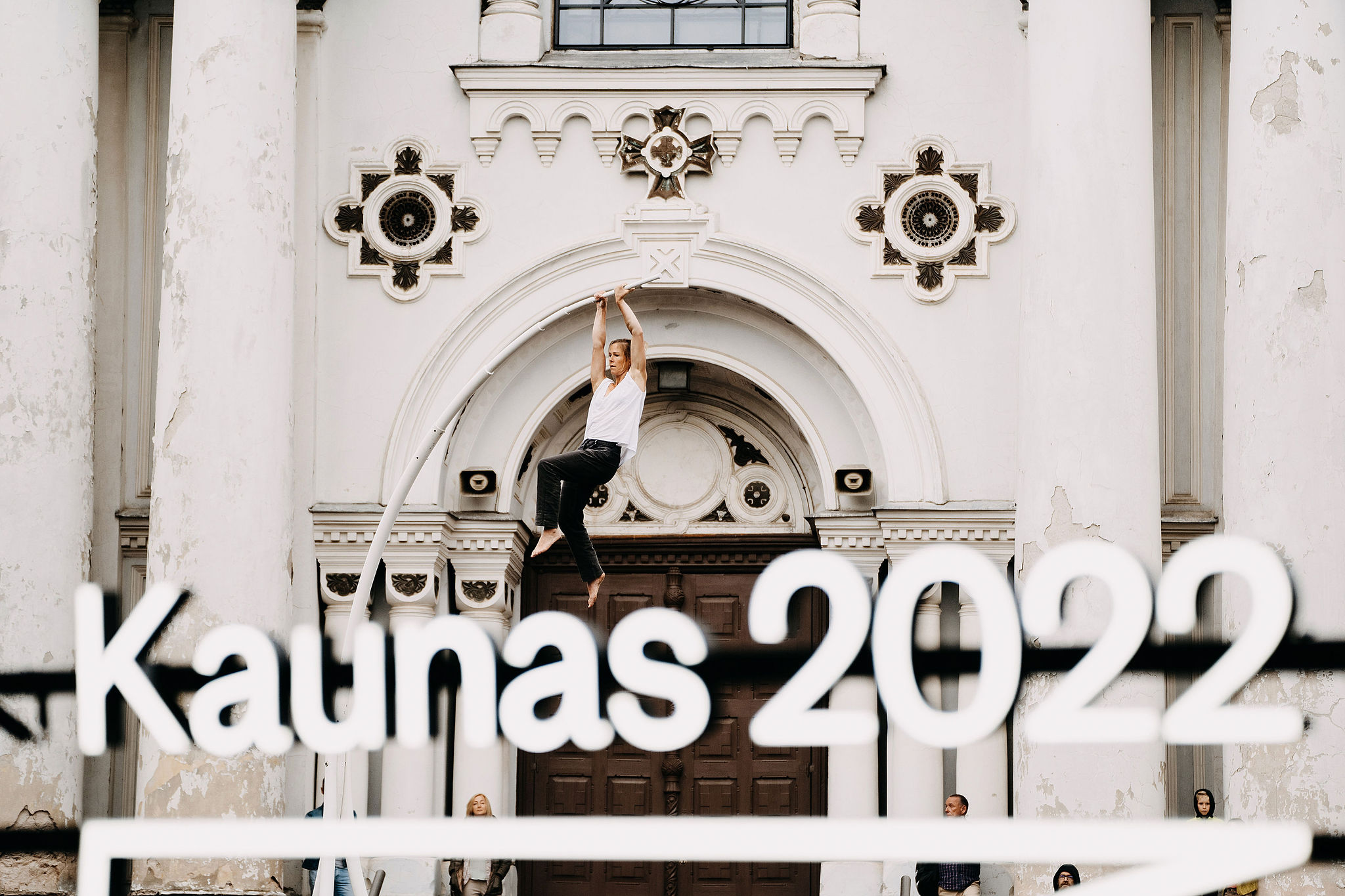 - What is the backbone of the opening event for January? What message do you personally want to stress for the audience?
- What is the backbone of the opening event for January? What message do you personally want to stress for the audience?
- The backbone of the event is a myth! The myth of the Beast of Kaunas. The story will be extended over the other big events we are planning for May 2022 and November 2022. It’s a moment when we can come together, as a city, as a country, and kick the year off through culture. The Beast of Kaunas of course, like all myths, is not real. It’s a beautiful excuse to meet, to reflect and think! The opening weekend is an invitation to everyone. So, the show is the chance to talk together about this city, its past, present and most importantly, its future. And it is the first time in ECoC’s history that three cities, Kaunas, Esch and Novi Sad, will hold the title at the same time. What a chance to extend opportunities for audiences, communities and audiences alike to discover new things about one another?
Next year, Kaunas and Kaunas district will become one big European stage and turn the city to a place where you will not escape culture. More than 40 festivals, 60 exhibitions, 250 performing arts events (of which more than 50 are premieres), and over 250 concerts are planned to take place in 2022. It is going to be the year-long non-stop biggest co-creative festival of all. Come co-create and celebrate with us!
Full programme: https://kaunas2022.eu/en/programme/
Inspired Communities: the Strength and Success of Kaunas – European Capital of Culture 2022
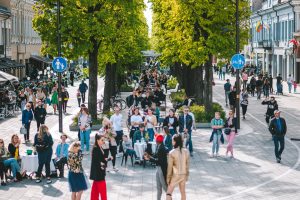
How does one measure the success of a project as ambitious as the European Capital of Culture? Is it the astonished foreign guests and the participating artists praising each other? In a way. However, the real achievement and strength are the local communities that got closer and became more inspired during the process. This is why creativity as part of everyday life is included in the core formula of Kaunas – European Capital of Culture 2022.
Five Years Together
‘We the People’, often called ‘Fluxus Labas!’, is one of the broadest of the Kaunas 2022 programmes, and over five incredibly intensive years of day-to-day activities, it has had an impact on the majority of communities in Kaunas, promoting the idea that residents themselves are capable of addressing challenges and making change.
‘The basis for our programme’s success rests on shared human and European values: the openness of people and communities toward one another, and to diversity, innovation, and creative solutions; inclusion of different people and organizations; building and maintaining interpersonal relationships; and promoting dialogue and co-creation,’ Greta Klimavičiūtė-Minkštimienė, the curator of the communities programme, believes.
The curator stresses the rest of the unique features of the communities programme, including its experimental spirit, sense of adventure, and playfulness: ‘By embracing these principles, we symbolically follow in the footsteps of George Maciunas – the founder of the Fluxus movement and a Kaunas native – and his ability to see the world and its challenges differently – more playfully and more simply, from a more human perspective.’
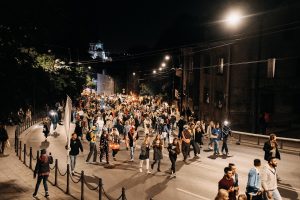
More and More Happy Courtyards
The courtyard project has become the pride of Kaunas 2022. Many have copied one of the most successful pandemic-era projects created in the European Union, presented at international awards ceremonies.
Since 2019, ‘Fluxus Labas!’ has been encouraging residents to engage with their neighbours to change their surroundings, take responsibility for them, and find creative solutions to the challenges they face. During Lithuania’s first quarantine in 2020, ‘Fluxus Labas! Kiemas’ adapted to the changing situation and launched the Culture to the Courtyards project. Different performers presented shows to residents in surrounding apartment buildings, allowing audiences to enjoy culture safely in their yards, from their windows and balconies.
In 2022, the program will invite one and all to as many as 80 courtyards in 11 elderships in Kaunas to enjoy the gift of shows by theatre, dance, contemporary circus, music, and other performers.
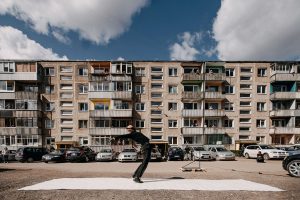
Laboratories Producing Happiness
The Fluxus Laboratories is a particular branch of the ‘Fluxus Labas!’ project that trains community facilitators. These people have now spread out through the city. Their goal is to bring together formal and informal communities, city residents, and organizations in different sectors and encourage them to become involved in community cultural and artistic activities and promote such activities themselves in specific neighbourhoods.
In 2022, the Fluxus Laboratories will ‘explode”’ and present unique community cultural and artistic projects in many different neighbourhoods throughout Kaunas. As early as April 23, the Šilainiai Urban Eco Festival, the only one in Lithuania, will unite residents and various organizations. The festival promises to impress with Šilainai natural and landscape design installations, lectures, and educational programmes.
On June 10–12, the community of Draugystės (Friendship) Street in the industrial part of Kaunas will present an interactive cultural and local creative game called The Art of Friendship. Visitors will be invited to enter sites that have been previously off-limits, learn more about welcoming residents and workers and their co-creations, and participate in playful and artistic activities.
On June 11, one will have the chance to walk through Eiguliai in a way they have never had before. Collaborating with different street artists, the community has created drawings that reflect its identity and now invites you to explore them on this colourful and musical walking tour.
On June 18, the Dainava neighbourhood community, collaborating with professional performers, artistic groups, and volunteers, will invite everyone to a midsummer mystery in Draugystės (Friendship) Park.
The real Midsummer will be celebrated in the impressive Šančiai Festival. Initiatives promoted in Šančiai over the past four years will all come together at this three-day event.
One will be able to visit a former gunpowder warehouse, ‘Parakas’, and celebrate what Lithuanians call Joninės by immersing into a surprising opera of imagery and watching a performance of ice and fire. Moreover, artists and residents will revive the old Šančiai barracks from their deep sleep and invite everyone to creative workshops, musical performances, and tours.
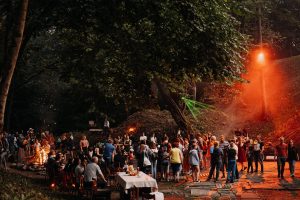
‘Just Come’, a poetry festival by the Gričiupis community, will take place in Kovo 11-osios (March 11) Park on July 23 and will also feature a ceramics collection of more than 700 works of art crafted by members of the community as they listened to poetry.
On July 9, the festival ‘Forest of the Senses’ will take place in the Panemunė pine grove and will join professional artists, naturalists, and herbalists to create land art and sound installations.
Courtyard Gallery (Kiemo galerija), a new legend of old Kaunas, will invite people to experience colourful creations as well as the retelling of local stories in central Kaunas and its Old Town courtyards on July 16.
On August 6, the community of Žaliakalnis will host a dancing tour, ‘Step by Step’, that will directly involve professional artists, residents, and visitors to Kaunas, calling them to learn more about the living memory and history of Žaliakalnis and its local mythical creature – Kaukas.
August will also be a perfect time to meet by the Kaunas Reservoir, colloquially called the Kaunas Lagoon. The community of Petrašiūnai will host the celebration on August 14 to emphasize the vital role the lagoon plays as part of the face of Kaunas and reveal the whole range of activities that take place around this body of water.
On August 20, it will be time to discover the Vilijampolė eldership. The artists’ collective God’s Entertainment (Austria) performance will open the ‘Under the Carpet’ installation. One of the show’s elements will be weaving a carpet by the people of Kaunas themselves. On the same day, Culturethon, a festival of sport and art, will travel from lake Lampėdis to the banks of river Neris.
A private music school located in Šilainiai, Jazz Academy, and composer Hara Alonso are of an experimental composition project titled ‘The City Composing in Kaunas’, a work of music created with the people of Kaunas. Its results will be presented on September 10 at the Ninth Fort.
In Aleksotas, audiences will be invited to view an installation assembled from residents’ stories on September 10. The arts group Effetto Larsen (Italy) will create an emotional map of the area based on the memories of those who live here and the experiences of specific places in the neighbourhood. The final result will be an installation modelled as an emotional, interactive journey through the Aleksotas neighbourhood. On September 18, the community of Aleksotas will host the ‘Flying Through Time’ interdisciplinary festival. Different spaces throughout Aleksotas will become stages for theatrical, musical, and other types of performances.
The Šančiai Cultural Courtyard Festival will be yet another occasion to come back to this colourful neighbourhood. On September 14–15, the celebrations will take place near a traditional wooden house. They will combine two initiatives: Elder Stories, a premiere showing of a documentary art film, and a music festival.
Time for Festivals and Celebrations
‘Fluxus Labas!’ is responsible for the birth of the artsiest sports in the world. It’s climbing up Parodos Hill in every possible way except traditionally. The challenge is also the culmination of the Fluxus Festival that will take place on September 10. Each year, Parodos Hill is closed for transport for precisely 22 minutes, and the starting point of the climb is at the Geoge Maciunas Square. After finishing, the participants will take part in a Fluxus carnival. People in Kaunas begin preparing for this celebration well in advance, creating costumes and building props.
A two-day Communities Forum at the Zapyškis Church of St. John the Baptist, Kaunas District, will take place before the Fluxus Festival to discuss results achieved in Kaunas and the Kaunas District over the past five years, talk about newly created and tested models and methods for engaging with communities, and about the changing view of community-based art, its benefits, and financing. The second day of the forum will be devoted to discussing the vitally important subject of including Kaunas’ rivers and communities in river revitalization.
Of course, many more festivities are planned for the whole of 2022. On May 20, for example, the place to be will be Laisvės Alėja and Vilniaus Street, the central axis of Kaunas connecting Soboras and Kaunas Town Hall. The Courtyard Festival will foster community-building and friendship among people living in the city of Kaunas and the surrounding region. It will present an opportunity to celebrate International Neighbours’ Day. The event will be marked by music played in the most unexpected places and different creative installations and performances.
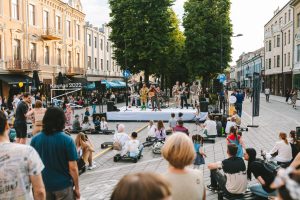
May 21 is the official date of Putvinskio Street Day. Since 2017, once a year, on one Saturday in May, rain or shine or pandemic, all of V. Putvinskio Street comes together to celebrate the neighbourhood and its rich history.
The third event of the main weekend in May is called ‘Celebrate the River’. People will be invited to take part in cultural walks along the Nemunas and Neris and then share in the celebration when these two routes meet at Kaunas Santaka Park, the confluence of the two rivers. This event will allow residents and guests to reengage with the city’s rivers and their banks, learn more about different Kaunas communities and discover the city anew, but this time from the water. Later in Summer 2022, initiative TẽKA will launch a social game aimed at connecting river banks.
Contemporary Vibes in Kaunas District
‘Relationships between cities and their surrounding areas are interesting and complicated throughout Europe, and everywhere they’re influenced by culture. This is why listening to the needs of our region was the first task of Kaunas 2022. Another objective was adapting the programme tools of cultural capital to those needs’, Lukas Alsys, curator of the Kaunas District programme, stresses.
He believes human relationships and coming together play an essential role in the Kaunas District, like nowhere else. This is why these district projects have created unique, one would even say passionate, partnerships. The best example is Italian contemporary circus director Roberto Magro, who is now beloved by communities in the district. He will come back to direct a travelling contemporary circus performance in Batniava eldership at the beginning of the summer, and then will work in Linksmakalnis for an ‘angelic’ show. That’s just one of many reasons to follow the artistic travels beyond city limits.
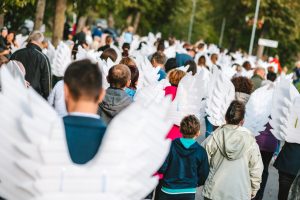
Jeans and Steampunk, Time Travel and Rock Music
The work of the Capital of Culture in the Kaunas District is taking place along several approaches. One of these is a community project called Contemporary Neighbourhoods, involving fifteen local municipal jurisdictions within the Kaunas District. The essence of the project is simple: local jurisdictions called ‘seniūnijos’ (elderships) strengthen communities and address rising challenges through culture.
From June to September 2022, the elderships invite everyone to feel the strong pulse of community and creativity in the Kaunas District and attend the main Contemporary Neighbourhoods events.
Ežerėlis will present a series of photography exhibitions at a newly established community gallery and an alternative reality audio guide created by artist Žygimantas Kudirka. The project launch is scheduled for June.
On June 11, The community of Kulautuva will participate in a theatrical musical performance about the history of the resort town. It will be accompanied by various works of art in different public spaces by the Nemunas River.
The Raudondvaris community and choreographer Marius Pinigis and event director Eglė Valadkevičiūtė invite everyone on a beautiful tour – a journey through time. This event’s primary form of expression will be presented in a theatrical night-time walk on June 17.
Between June 30 and July 3, historic locations in Karmėlava will be presented through the increasingly strong Street Rock Festival, crowned by a combined environmental artwork called Flying Cepelinai, created by artists from Lithuania and Luxembourg: Algimantas Šlapikas and Serge Ecker.
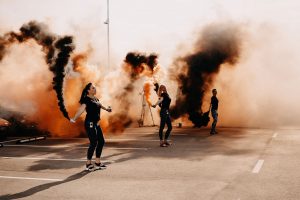
A great time to discover Babtai eldership will be July. The community decided to revive an old trolleybus from the streets of Kaunas. The trolleybus became a creative laboratory for everyone to attend.
Also in July, Vilkija will celebrate Midsummer, and their centrepiece will be a ferry connecting both sides of the Nemunas River. The celebration will include concerts, theatrical performances, and art installations.
In August, the communities from around Garliava will organize a Steampunk Festival, inviting local communities and guests to a magical fiesta. The festival aims to introduce visitors to the Steampunk movement, and its programme will give everyone a chance to plunge into this fantastical world and liberate their imaginations and creativity.
The same month, the neighbourhood of Ringaudai will present their eldership through the Ringaudai Almanac, created by the community and artist Paulina Ružauskaitė. The almanac will be presented along with an interactive sculpture dedicated to this community.
On September 3, the Lapės (literally foxes) town will host the now annual Lapės Sustainability Festival! Did you know that, in 2021, the community created a recreational space from old jeans?!
Linksmakalnis and the charismatic abovementioned Roberto Magro (Italy) have created a show about angels. Nobody knows yet what kind of show this will be. And they can’t possibly know since co-creation means working without a planned script! All we know is that show will be presented in September.
At the heart of the identity of Rokai is the uninterrupted 400-year-old history of its brickyard and the clay found all around the town. In recent years, community members have been introduced to various ceramic techniques and have worked together to create the Clay Road. On September 3, the community will unveil a mythical sculpture and invite guests to a unique show.
With the help of artists Enrika Striogaitė and Remis Ščerbauskas, the harmonious Kačerginė resort town by Nemunas River plans to create a collection of stories inspired by the experiences of its residents. Attend the presentation and a classical music concert on September 4.
Located near the 11th Fort of Kaunas Fortress, Akademija will present a musical production at the military heritage site. Make sure you stop at the sustainable shop Lokali: Made in Akademija, established by the community, for souvenirs. See you on September 10?
The Domeikava eldership has chosen to develop lively activities, roles, and orienteering games. The project Let's Play Domeikava aims to experience and learn more about this Contemporary Neighbourhood. The launch is scheduled for September 17.
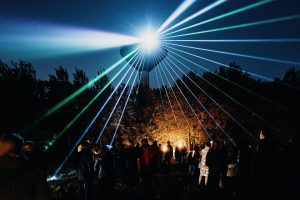
A Culture Boat and A Path of Emerald
Ever searched for emeralds? In the context of Kaunas 2022, emeralds are new art objects that will appear in the most unexpected places. Some of them have been under creation from the start of the programme; others rely on objects in the Kaunas District for their existence, transforming them in a contemporary way. The emeralds will appear in 9 elderships of Kaunas District.
A unique river engineering and landscape design project in Europe, Nemuno7, will serve as a public cultural space and will be officially opened in May. Located in Zapyškis, the dredger dates back to 1965! Instead of dismantling the unused object, a more sustainable solution was devised: to create a new, more relevant role and transform it into a cultural space, inviting the public to explore the subject of water from the perspective of art, history, and science. The Nemuno7 dredger will also have space for artistic residencies.
A tool to discover Vandžiogala, scheduled to launch in Autumn 2022, is a unique diary by Mindaugas Lukošaitis. Using material gathered around the small town of Vandžiogala, the artist added his own drawn stories to the area’s authentic landscape, presenting audiences a very personal code by which they can “read” what he has seen. This project was initiated by Kaunas 2022 programme Memory Office for its CityTelling Festival.
Also organised by the Memory Office, the Lithuanian Klezmer Orchestra’s tour of towns in the Kaunas District will rekindle local communities' memory and culture. Did you know that, before the Second World War, the towns of the Kaunas District were home to significant Jewish communities? The orchestra’s bus will stop in Čekiškė, Vandžiogala, Vilkija, Babtai, Kačerginė, Kulautuva, and Zapyškis. Performances will be accompanied by tours exploring the not so distant past of these towns.
For the European Capital of Culture programme, the 17th Kite Festival in Zapyškis will feature creative workshops, kite and paper aeroplane competitions, a postal postcard service, and soap bubbles. Artists and kite masters will create large and impressive banner kites, and everyone will have a chance to help make the community kite.
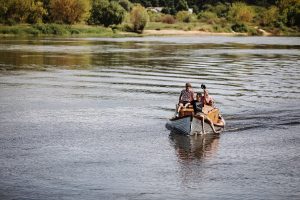
Yet another legendary festival, this time launched by the Kulautuva community, will present a rich musical programme in 2022. Akacijų alėja, an event for sung poetry, will present a series of concerts in four towns along the Nemunas River. Then, the main festival event will take place in Kulautuva. Instead of the usual one-day event, the festival will span through June and July.
Time to revisit the Kaunas Reservoir… and discover its Atlantida-like history. Everyone who comes to the Footsteps at the Bottom of the Lagoon festival on August 27 will get the chance to feel as if they’ve become part of the now flooded villages that once existed here. This event will have a bit of everything: songs, stories, and folklore from flooded villages, contemporary music, and innovative technological solutions.
On the same day and nearby, yet another exciting event to attend will be the Girionys Land Art Festival. The identity of the town lies in its beautiful nature and the expanse of the Kaunas Lagoon. Objects found in nature and ideas shared by residents will all be part of the co-creation process of land art objects.
Skanaus: European cuisines 2022, a food and culture festival, is scheduled for September 7–11 in Garliava. It will include presentations of cultures and the latest gastronomic trends from abroad, cooking lessons by restaurant chefs, culinary film production, family entertainment, concerts by Lithuanian and foreign musical performers, and talks shows, lectures, and all sorts of competitions.
Tadas Ivanauskas, the Lithuanian Zoo and Zoological Museum founder, lived in a villa called Obelynė in Akademija town. In July and August, a series of open-air events will be held to represent the cultural heritage of the Obelynė estate and its recently opened museum, park, and gardens. The main event is planned for September 17.
In August, the residents of Kaunas District and their guests will be invited to attend Mikado, a philosophical exploration of the connection between humans, their tools, and the virtual world. Produced by Šeiko Dance Company, it is choreographed by Vittoria de Ferrari Sapetto (Brazil – Italy – Belgium) and Andrea Valfre (Italy) and will be performed by an international team.
Kaunas 2022 memory program will build bridges between different cultures, religions and languages
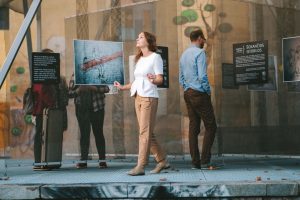
In 2022, the Kaunas 2022 program “Memory Office” will invite the audience to a year-long cultural research of Kaunas DNA. An extremely rich and multi-layered artistic program will lead to a brave confrontation with the city’s complex past like a mirror that helps you get to know yourself and your humanity better.
The program of events, which brings together creators from Lithuania and all over the world, plus a group of partners, will allow locals to get to know their city better, and for the visitors, it will become an atlas of new stories of Kaunas. World-renowned artists William Kentridge, Philip Miller, Jenny Kagan, the Sala-Manca Collective group of artists, and others will help to explore the city. The most important events in the city’s history, which shaped, changed and raised the city from the Second World War, the 1972 “Kaunas Spring” to the myths, stories and legends of the present-day city will be presented through exhibitions, concerts and performances.
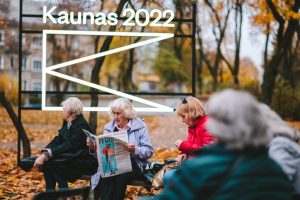
Extensive four months programme of the CityTelling Festival
The bigest event of the “Memory Office” program, the CityTelling Festival, which is already popular with visitors, will take place in 2022 for four months and will talk about the return and the community spirit. In this more than ever conflicted world, we will try to forge a new relationship not only with our painful history, but also with those who live next to us today. Extensive program of the festival includes stories of various forms that build bridges between different cultures, religions and languages. Stories that teach to empathize and listen to the Other.
The international program will invite to exhibitions, performances, concerts of internationally acclaimed artists, new routes created by city history enthusiasts and excursions to explore the different side of the city. The storytellers’ project “Where can I find you?” will spread around the city’s cafés, streets and courtyards, looking for everyone who wants to hear and share the stories of the modern world. Finally, the conference on the idea of Europe will raise one of the most pressing questions of today: what is Europe and what is our place in it?
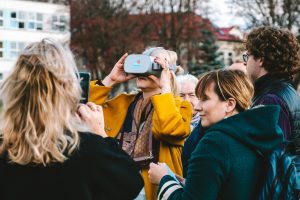
Special attention to the Jewish memory of Kaunas
The Memory Office program and the CityTelling Festival will pay special attention to the Jewish memory of the city. In 2022, the European Capital of Culture will invite Litvaks scattered all over the world to meet at the World Litvak Forum. On 29-30 September, in the program of discussions and culture, famous artists, scientists and representatives of the world of culture will talk about the Litvak identity, memory, and the role of culture in giving meaning to multicultural memory and creating new opportunities for dialogue.
One of the most anticipated events of Kaunas – European Capital of Culture 2022 is the work “Kaunas Cantata: Reconciliation” by composer Philip Miller and artist Jenny Kagan. The largest and most massive musical experience of Kaunas to date, dedicated to the symbolic reconciliation of nations, will be played during the Litvak Forum. More than 400 performers joined this piece of vocal instrumental music: local musicians and singers, choirs, representatives of different genres and generations.
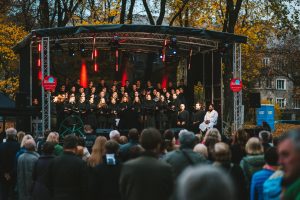
The major events of the four-month CityTelling Festival program are also dedicated to the Jewish theme – exhibitions, performances, musical stories, installations dedicated to the heritage of Jewish memory and cultural signs in the city spaces, and many other activities. Litvak artists who returned to Lithuania from the Republic of South Africa, Great Britain, France and Israel took a particularly active part in the development of the program. Main events: William Kentridge’s exhibition “What We Don’t Remember”, musical performance “Dybbuk”, Jenny Kagan’s exhibition “Out of the Darkness”, photography exhibition “The Last Litvaks”, art installation in public spaces “Threshold” and others.
The book “Kaunas Jews”, which will be released in Lithuanian and English languages this year, is no less important. This is the first such presentation of the Jewish history of Kaunas from the most important facts, concepts and names. This most comprehensive book on the subject to date does not seek to answer all the questions, but starting from the 15th century will consistently remind the contribution of Kaunas Jews to education, medicine, industry, business, culture and other areas of life, and will touch on the painful pages of history.

Events dedicated to the times of the disobedient and a different look at the city and its people
The special program of events will remind of the time that led to the biggest historical turning point in the life of the city. The nineteen-year-old Romas Kalanta who set himself on fire on 14 May 1972 and the events that followed led to the birth of the so-called “Kaunas Spring” – anti-Soviet protests that involved thousands of people and took place mainly in Laisvės alėja (Liberty Avenue). These events left traumatic traces not only in the further development of the city, in its cultural life, but also in the fates of a large number of young Kaunas residents. These historical events and the period of the disobedient will be revived within the Kaunas 2022 program through performances, exhibitions, concerts, discussions, meetings, etc. dedicated to this topic.
The crucial point of this program will be the exhibition “1972: Regime, Youth and Art”, in which paintings, photographs and films, documentary testimonies of musical life, youth fashion and other artefacts will tell about alternative culture and non-Soviet way of life in Soviet Lithuania. The exhibition will reveal the diversity of mindsets and creativity in the Soviet background that levelled everyone. It will explore how aesthetic tastes and ethical attitudes in Soviet times shaped different patterns of life and the atmosphere of disobedience to the government.
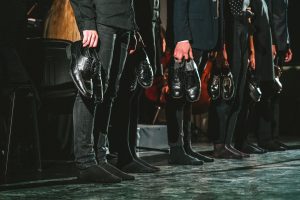
A series of events dedicated to the identity of the city will invite to look at the city and its residents from a different angle. We will examine the city, re-explore the city’s industrial heritage and histories of some factories. Perhaps the most interesting highlight of the program is the conversation between Kaunas and Vilnius about the confrontation between the two cities, the silent struggle and the mute dependence. In the exhibition, which will take place simultaneously in the two cities, MO museum together with Kaunas City Museum will remind how the big cities shaped each other and how modern Lithuania arose from the tensions between them.
Important events: Exhibition “1972: Regime, Youth and Art”, concert ” Made in Kaunas”, Historical-documentary performance “Kalanta”, rock opera “Kalanta”, exhibition “Kaunas – Vilnius: move the mountains”, route “Memory Circle”, exhibition “The Big Industry” and others.
Kaunas walls also tell stories
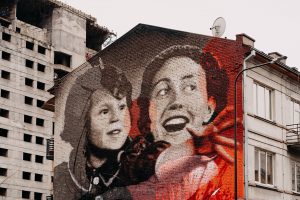
Kaunas and Kaunas district have been adorned with works of street art that bring back the faces of those who lived before us, tell their fates and present culture. This way, the poet Lea Goldberg , the charismatic Rosian with her mother Gerta, and the signs of the Tartar legacy returned to Kaunas again. The number of these meaningful wall drawings is increasing, so when wandering around Kaunas, Kulautuva or Kačerginė, don’t forget to look around and stop to read the inscriptions. Look for the special memory street art route at atmintiesvietos.lt.
And this is only a short look at the Kaunas – European Capital of Culture 2022 program “Memory Office”, which brings back the memory of the city’s ethnic communities.
Next year, Kaunas and Kaunas district will become one big European stage and turn the city to a place where you will not escape culture. More than 40 festivals, 60 exhibitions, 250 performing arts events (of which more than 50 are premieres), and over 250 concerts are planned to take place in 2022. It is going to be the year-long non-stop biggest co-creative festival of all. Come co-create and celebrate with us!
Full programme: https://kaunas2022.eu/en/programme/


